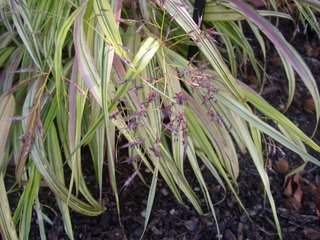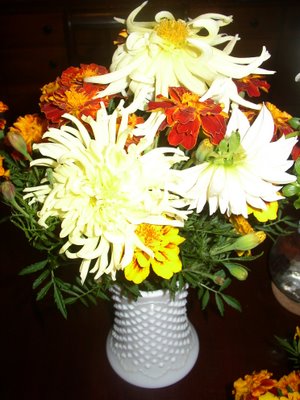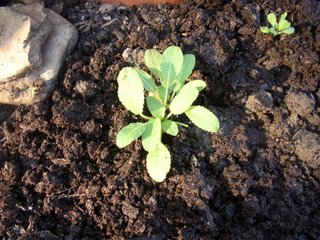I try to always purchase my plant material locally... but after seeing the limited choices this spring for things like seed potatoes ("red" or "white") and onion sets ("red," "white" or "yellow") I decided to mail order my garlic. This turned out to be a good idea because the only choice my local garden center offered was: "garlic" They didn't even offer a selection of softneck vs. hardneck, and most disappointing of all was that the people working there weren't even sure which type they were offering.
 When I was a newbie gardener--before I became conscious of the importance of buying things locally-- I ordered two blueberry bushes and a handful of seed packets from Territorial Seed Company. I haven't ordered from them in a few years because they're on the west coast, but I had been happy with their service and products so I checked out their website to see if they had any good garlic offerings. It didn't take too long for me to be seduced. After some time, I narrowed my choices down to 4 types for this year.
When I was a newbie gardener--before I became conscious of the importance of buying things locally-- I ordered two blueberry bushes and a handful of seed packets from Territorial Seed Company. I haven't ordered from them in a few years because they're on the west coast, but I had been happy with their service and products so I checked out their website to see if they had any good garlic offerings. It didn't take too long for me to be seduced. After some time, I narrowed my choices down to 4 types for this year.'Chesnok Red' is a hardneck garlic said to be great for baking with a creamy consistency, and as you can see here its cloves are very pretty. 'Purple Glazer' is another streaked hardneck garlic, with "a strong flavor that holds up well to baking" but without heat or aftertaste.
'Siberian' is the last type of hardneck garlic that I purchased from Territorial. It wasn't offered as organic, like those mentioned above, but it intrigued me because it is supposed to have a very high allicin content. Allicin is the chemical in garlic that is credited for maintaining normal cholesterol levels, boosting the immune system, and enhancing circulation.
Hardneck garlics are said to have more flavor than softnecks, but hardnecks only keep for several months where softnecks can be stored in a cool, dry place for 6-8 months. Softnecks are good garlics for braiding, too. I ended up adding the organic 'Polish Softneck' to my order so that I could extend my garlic usage through much of next winter. Many softnecks do better in the south than in the north, but this one is supposed to be relatively cold-hardy as well as flavorful. We'll see.
I planted my garlics yesterday, and found another benefit to growing your own garlic. Since you're supposed to only plant the best and biggest cloves, you end up with instant gratification because the rest are immediately available for eating! Some 'Siberian' cloves ended up minced into my potato and leek soup yesterday, and I also tasted a couple of cloves out of hand.
I am going to do a garlic tasting (raw, and baked) of the cloves I have left, and take notes. Then I will do the same after harvesting the grown garlic next summer. It will be interesting to see how growing through the year in my garden affects the flavor of these garlics... I promise to post reviews, a la Hanna's Tomato Tastings, next summer!







